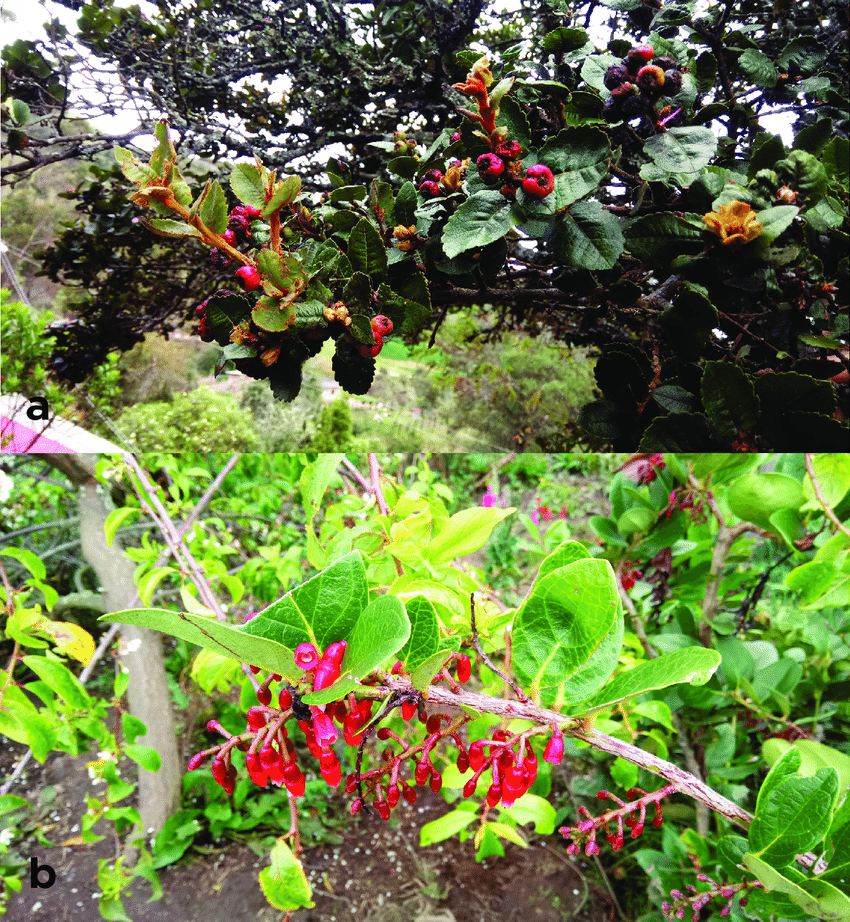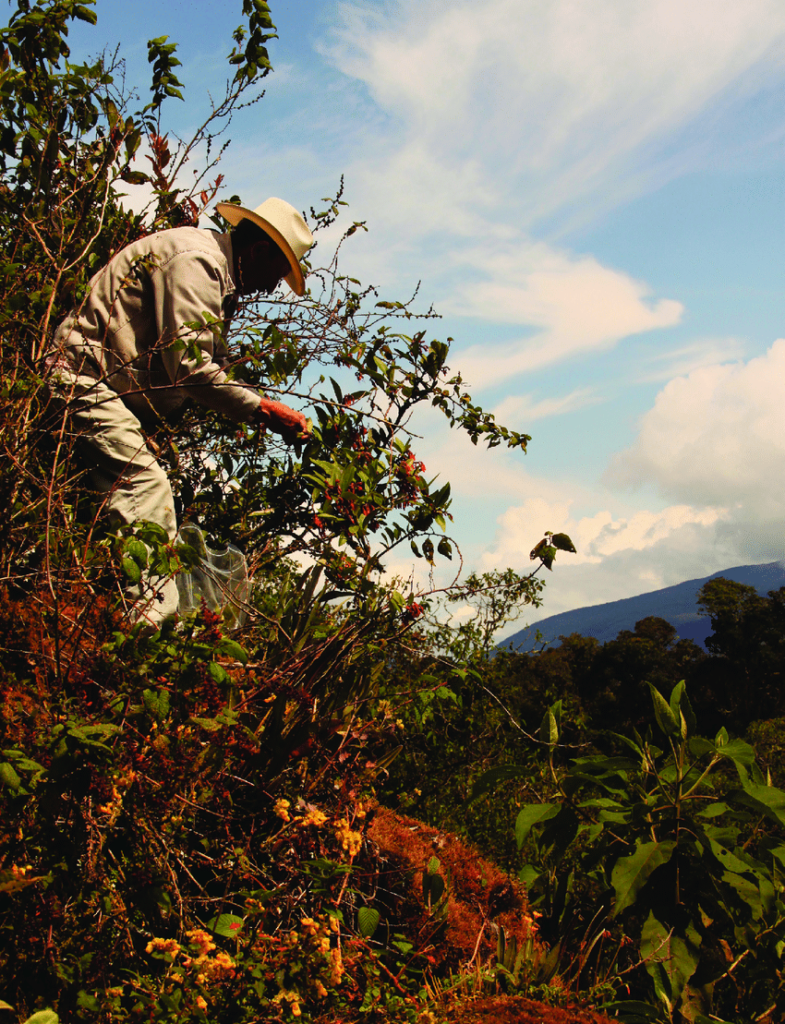
The species’ names are Mortiño (Hesperomeles goudotiana) and Uva Camarona (Macleania rupestris). Their fruits have extremely rich nutritional value and their acidic flavor give a delicious combination with sweet meals such as desserts. They serve as a source of food not only for humans, but also for many wild animals. The plants spontaneously grow in forested areas as well as along roadsides and in orchards.
A cultivation of the plants is not common because local people consider them to belong to the forest and be part of the ‘wild’. Nevertheless, sometimes one can find them growing in orchards or farms, especially as part of green fences. Because of the plants’ adaptability to a wide range of growing conditions, their seeds are used in restoration projects in degraded areas.
All in all, these plants are part of fragile and endangered ecosystems, so the harvesting of their fruits for human use or for selling should be done carefully. When the rate of harvesting is higher than the natural regeneration it holds the danger of overharvesting the fruit. Farmers know that, they harvest them in small amounts for household consumption. But more and more, market opportunities are pushing the harvesting to an unsustainable level.
On the other side of the coin, the rediscovery of the fruit can also be positive. The renovation of practices and uses can attract more attention towards the species. Younger generations and people in urban centers can be involved, know about them so the traditional uses would not be lost.
In order to understand the relationship between the commercialization, conservation and sustainable management of these species the research team first identified the relevant stakeholders. As a “relevant” stakeholder they defined everyone who is in contact with the plants from the collection to its final destination. The research team visited harvesters, markets, restaurants etc. and interviewed 47 key actors in the region of Bogota.
The interviews showed that there is a potential for renewing the uses of these plants and recovering the related biocultural memory by means of culinary practices in both: rural and urban areas.
This could be achieved by interconnecting the processing areas, the markets and the areas of harvesting. Which means, that the promotion of market opportunities should go hand in hand with the raising of awareness on the risk of over harvesting the plants at the same time.

Thus, a common perspective of the different actors of the agri-food systems was that there is a high risk that the territorial disconnection of harvesting, markets and further processing can hinder the preservation of the species studied and negatively impact the ecosystems of origin.
Looking a bit deeper the research team found the following three underlying root problems of territorial disconnectedness of markets. First, economic value is mainly decided in monetary terms; second, markets are less and less aware of the territorial socio-ecological relationships of products; and third, economic value mainly reflects the disconnect between markets and the territories from which products originate.
Territorial reconnection is possible when the stakeholders that are part of the commercialization are themselves aware of the origin of the fruits, the ecosystems, the traditional practices of harvesting and the risk of over harvesting. By looking at the culinary use of fruits in rural kitchens and the way their orchards and farms are designed, it also becomes clear that their use must be thought of not only in terms of urban consumers, but also in terms of the biocultural importance of the species in rural areas.
“Not everything in the field has to be commercialized”
This quote of a local farmers shows how farmers are aware that their relation with biodiversity is not only about making money out of it. Farmers also acknowledge that biodiversity can be used, by animals first, and then by humans. Their thinking yet goes beyond either “using a fruit is equivalent to depleting “or “the only way to preserve is not to use”.
Finally, it is essential to promote the proximity and linkage of the consumer with the species and the territory where they originate. This process starts by recognizing that these species have an identity as wild fruits of traditional use linked to rural territories and their inhabitants.
Recognizing that consumption is closely linked to local sustainability, it is reasonable that the recovery of this biocultural memory can be understood as a form of urban-rural dialogue about the use and knowledge of agrobiodiversity in Bogota’s agri-food systems. And from there, it is possible to generate valuation beyond economic or monetary considerations for these two wild berries.
Sources:
Hansen, Pauleit (2014): From Multifunctionality to Multiple Ecosystem Services? A Conceptual Framework for Multifunctionality in Green Infrastructure Planning for Urban Areas. AMBIO 2014, 43:516–529. DOI 10.1007/s13280-014-0510-2.
Lele, Springate-Baginski, Lakerveld, Deb, Dash (2013): Ecosystem Services: Origins, Contributions, Pitfalls, and Alternatives. Conservation and Society, Volume 11:343-358.
DOI: 10.4103/0972-4923.125752
Ortiz, Stefan & Consuegra, Cristina & Hammen, María & Pérez, Darío. (2021). Perspectivas urbano-rurales sobre la circulación de dos frutos silvestres del bosque altoandino en sistemas agroalimentarios de Bogotá, Colombia | Urban-rural perspectives about the circulation of two wild berries of high-Andean forest in agri-food systems of Bogota, Colombia.
Šūmane, Kunda, Knickel, Strauss, Tisenkopfs, des Ios Rios, Rivera, Chebach, Ashkenazy (2018): Local and farmers’ knowledge matters! How integrating informal and formal knowledge enhances sustainable and resilient agriculture. Journal of Rural Studies.Volume 59: 232-241.
DOI 10.1016/j.jrurstud.2017.01.020.


Pingback: NEWSLETTER - PECS